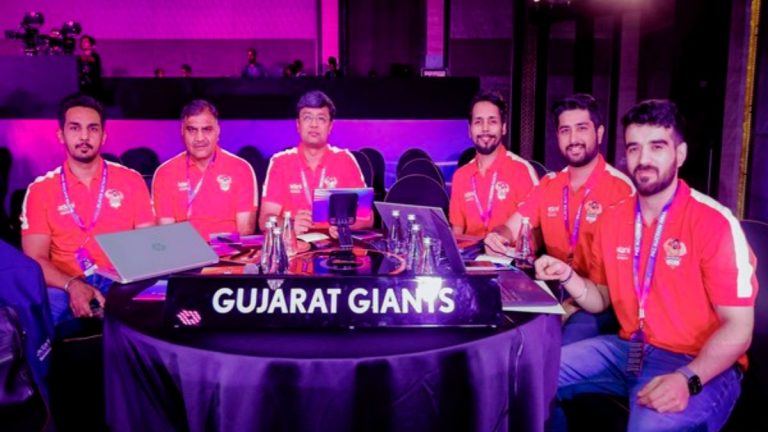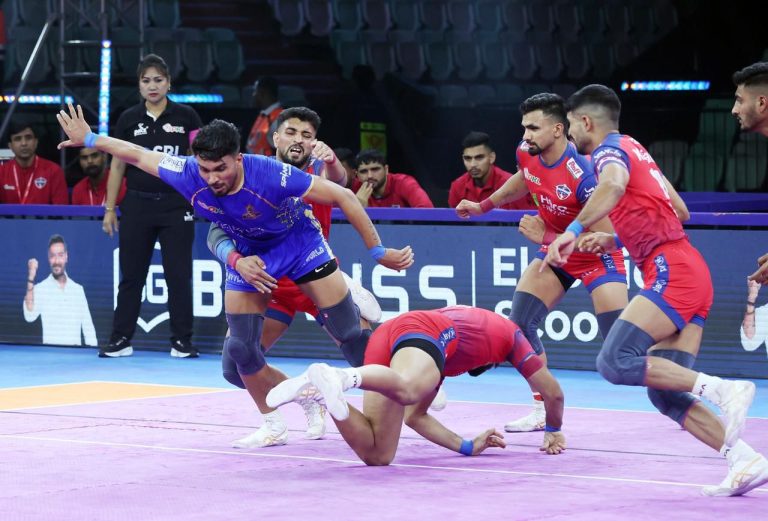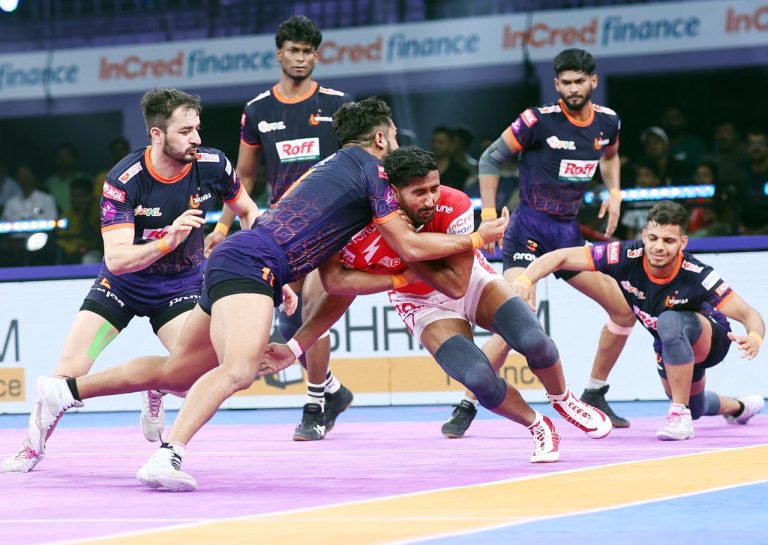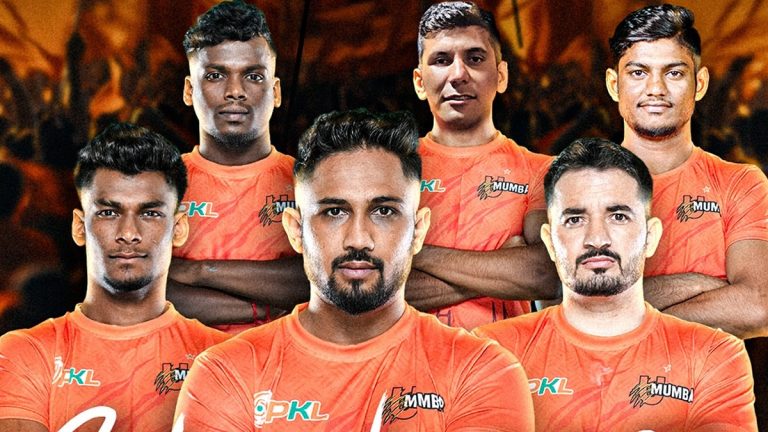What is a FBM Card in PKL and How does it Work?

The Pro Kabaddi League (PKL) Season 12 Auction is just around the corner, and fans are excited about which players will join their favourite teams. One of the most thrilling parts of the auction is the Final Bid Match (FBM) card, a rule that adds strategy to the process. So, what is the FBM card in PKL, its rules, and how it shapes team strategies. Whether you’re new to kabaddi or a die-hard fan, we’ll make the FBM card in PKL easy to understand for you.
What is the FBM Card in PKL?
The Final Bid Match (FBM) card is a special rule in the PKL auction that lets teams keep players they previously released by matching the highest bid made by another team. Introduced in the Pro Kabaddi League Season 6, the FBM card in PKL gives teams a second chance to bring back key players without entering a bidding war. Each team can use up to three FBM cards during the PKL 12 Auction, depending on how many players they’ve already retained. This rule makes the auction unpredictable, as teams can snatch back stars at the last moment.
If a team releases a player but regrets it during the auction, they can use the FBM card in PKL to match the final bid and keep the player. This adds excitement and strategy, making the PKL 12 Auction a must-watch event.
How Does the FBM Card Work?
The process of using the FBM card in PKL is simple but requires careful planning. Here’s how it works step-by-step:
- Player Release: Before the auction, teams release some players from their squad. These players enter the auction pool, where all teams can bid for them.
- Bidding Process: During the PKL 12 Auction, teams bid for released players. For example, if Pawan Sehrawat is released by Telugu Titans, other teams like U Mumba or Bengaluru Bulls might bid for him.
- Final Bid Offer: Once bidding for a released player ends, the auctioneer asks the player’s original team if they want to use their FBM card in PKL. The team must decide quickly – say “yes” to match the highest bid or “no” to let the player go.
- Outcome: If the original team says “yes,” they get the player back at the final bid price. If they say “no,” the player joins the team that made the highest bid.
In PKL, this process ensures teams have a chance to keep their star players, but they must be ready to pay the market price set by rival bids.
Rules for Using the FBM Card
The FBM card in PKL comes with specific rules to keep the auction fair. For those curious about FBM card in PKLmechanics, here’s a breakdown:
- Limit on FBM Cards: Each team gets up to three FBM cards in the PKL 12 Auction, but the number depends on how many Elite Retained Players (ERP) they’ve kept. If a team retains six ERP, they get only one FBM card. If they retain five, they get two FBM cards. Teams with four or fewer ERP can use three FBM cards. In PKL 11, all 12 teams had three FBM cards because they retained fewer than five ERP, and the same is expected for PKL 12 Auction.
- Player Eligibility: The FBM card in PKL can only be used for players released by the team before the auction. For example, Bengal Warriors can use it for Maninder Singh if they release him, but not for a player from another team.
- No Bidding War: The original team doesn’t need to bid during the auction. They wait until the bidding ends and decide whether to match the final price, making the FBM card in PKL a strategic tool.
- Purse Impact: Using an FBM card deducts the final bid amount from the team’s INR 5 crore purse. Teams must plan carefully to avoid running out of money.
These rules make the FBM card in PKL 12 Auction a game-changer, as teams must weigh the cost of retaining a player against their overall budget.
Examples of FBM Card Use in PKL 11
To understand the FBM card in PKL, let’s look at examples from the PKL 11 Auction, which show its impact. For fans searching for FBM card in PKL 12 Auction explained, these cases highlight how teams use this rule:
- Pawan Sehrawat (Telugu Titans): Pawan, a star raider, was released by Telugu Titans before the PKL 11 Auction. During the auction, U Mumba bid INR 1.725 crore for him. Telugu Titans used their FBM card in PKL to match the bid, bringing Pawan back to their squad. This move kept their captain and top raider, showing the power of the FBM card in PKL.
- Maninder Singh (Bengal Warriors): Bengal Warriors released Maninder Singh, a key raider, before PKL 11. When bidding reached INR 1.15 crore, they used their FBM card in PKL to retain him. This ensured their star player stayed, boosting team morale and fan excitement.
- Gujarat Giants (Mohammad Esmaeil Nabibakhsh): In PKL 11, Gujarat Giants used their FBM card in PKL to retain all-rounder Mohammad Esmaeil Nabibakhsh for INR 13.60 lakh. This strategic move helped them keep a versatile player without overspending.
These examples show how the FBM card in PKL 12 Auction can help teams keep their core players, even after releasing them initially.
How FBM Card Impacts Team Strategies
The FBM card in PKL is more than just a rule—it shapes how teams plan for the PKL 12 Auction. For those researching FBM card in PKL, here’s how it affects strategies:
- Retaining Key Players: Teams can release star players like Pardeep Narwal or Fazel Atrachali to free up their purse, knowing they can use the FBM card in PKL to bring them back if bids are reasonable. This was seen when Telugu Titans retained Pawan Sehrawat in PKL 11.
- Budget Management: With a INR 5 crore purse, teams must decide whether matching a high bid (e.g., INR 2 crore) is worth it or if they should save money for other players. The FBM card in PKL forces teams to balance star power with squad depth.
- Surprise Tactics: The FBM card in PKL adds unpredictability. A team might let bidding go high, only to use their card at the last moment, surprising rivals. This happened when Bengal Warriors reclaimed Maninder Singh in PKL 11.
- Focus on Young Talent: Some teams avoid using FBM cards for expensive stars and instead invest in young players from Categories C and D. In PKL 9, only eight FBM cards were used out of 36 available, as teams prioritized new talent like V Ajith Kumar.
These strategies show why teams plan carefully around this rule. It’s a mix of loyalty to players, budget planning, and tactical surprises.
Challenges of Using the FBM Card
While the FBM card in PKL is powerful, it has challenges.Here are some hurdles teams face while using FBM card in PKL:
- High Costs: Matching a big bid, like INR 2.15 crore for Sachin Tanwar in PKL 11, can drain a team’s purse, limiting their ability to buy other players.
- Limited Cards: With only three FBM cards, teams must choose wisely. In PKL 11, Jaipur Pink Panthers used two cards, leaving them with fewer options later.
- Risk of Overpaying: If a rival team bids high to force an FBM card, the original team might pay more than planned, as seen with Telugu Titans’ INR 1.725 crore for Pawan Sehrawat.
The Final Bid Match (FBM) card in PKL is a game-changer. By allowing teams to match the highest bid for released players, the FBM card in PKL ensures stars like Pawan Sehrawat and Maninder Singh can return to their teams. Its rules, like the three-card limit and purse impact, force teams to plan carefully, balancing loyalty with budget. This rule is what makes the auction unpredictable and fun. As the PKL 12 Auction approaches, expect the FBM card in PKL to create more unforgettable moments, shaping the future of the Pro Kabaddi League.







